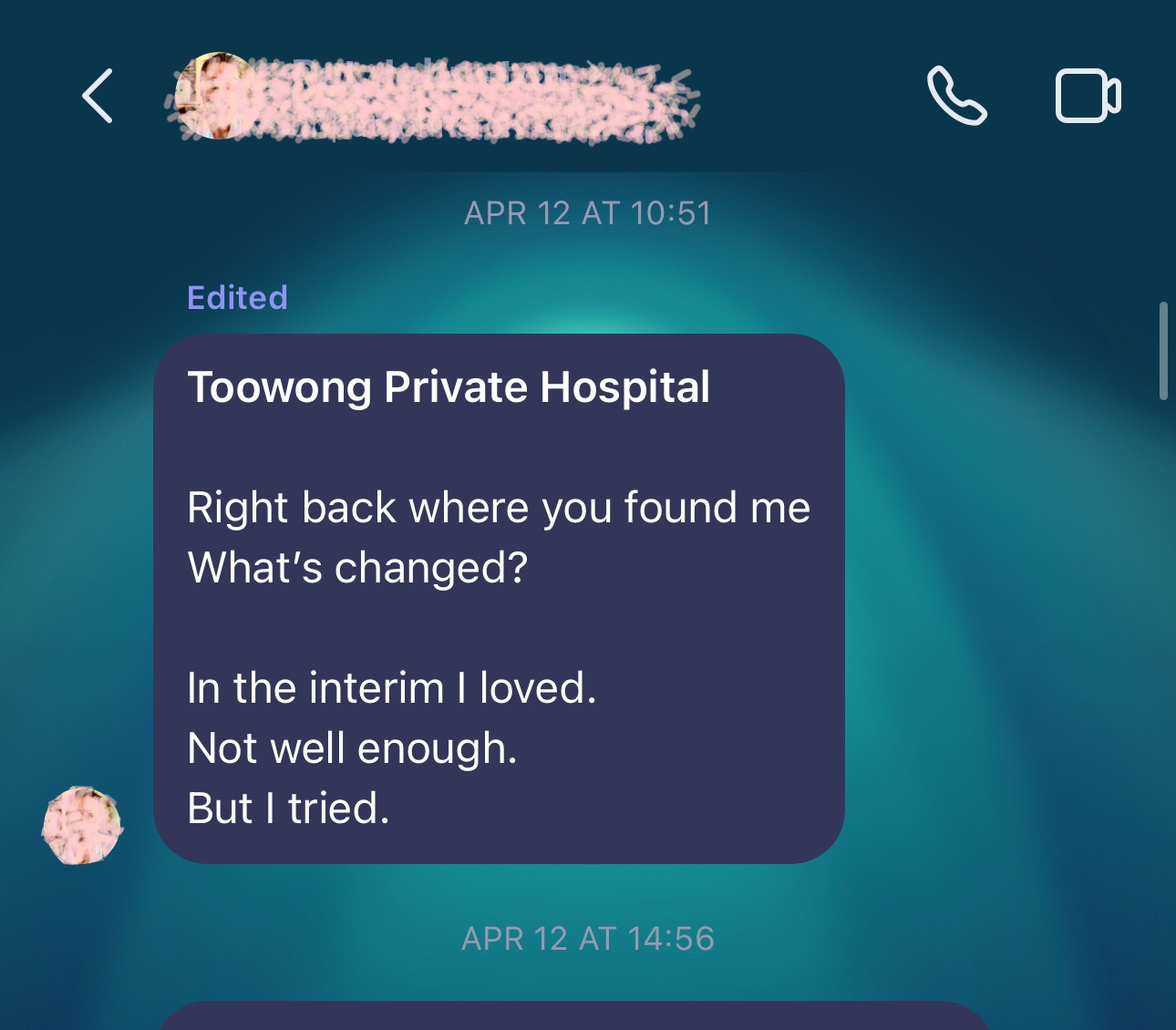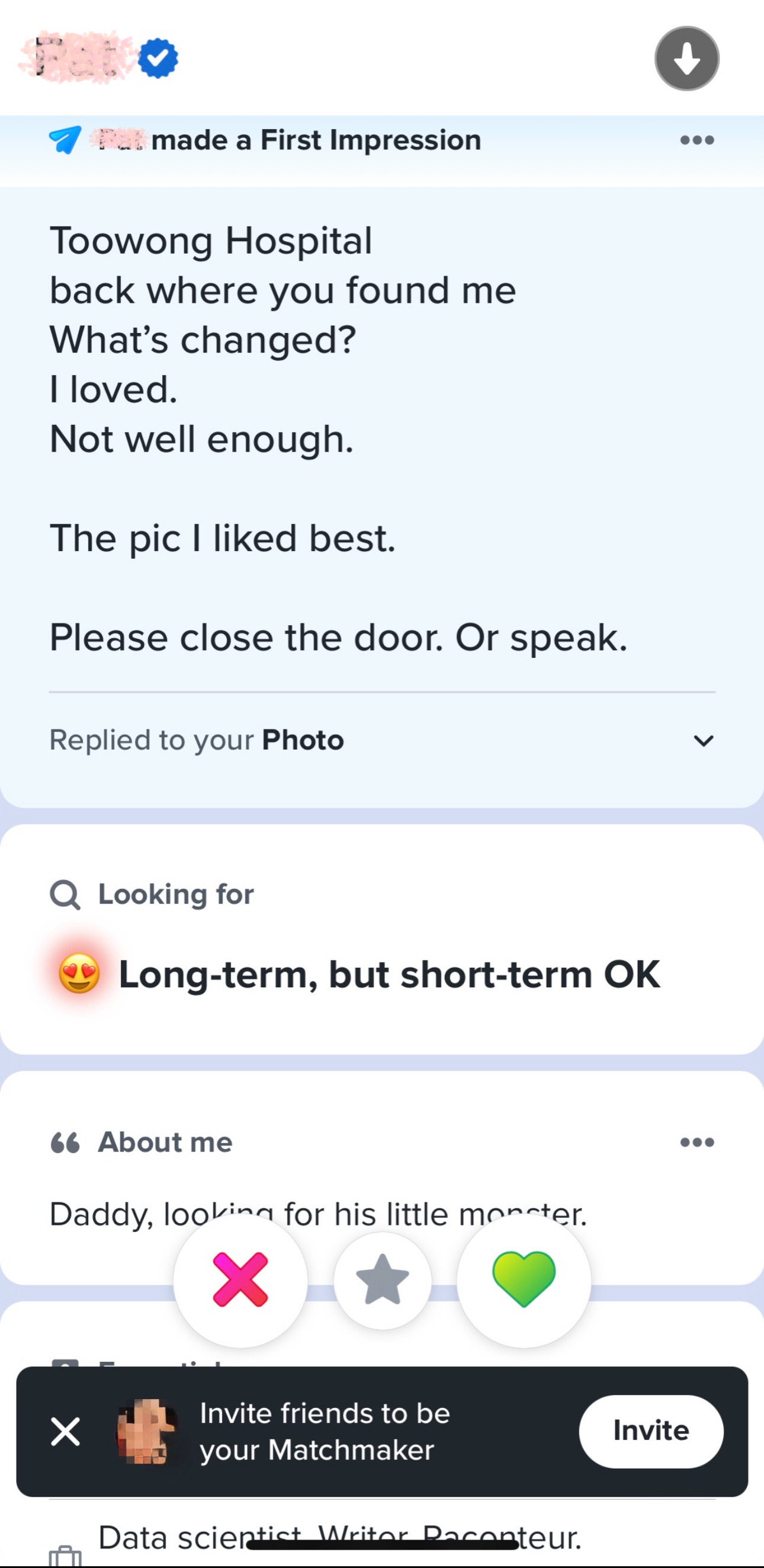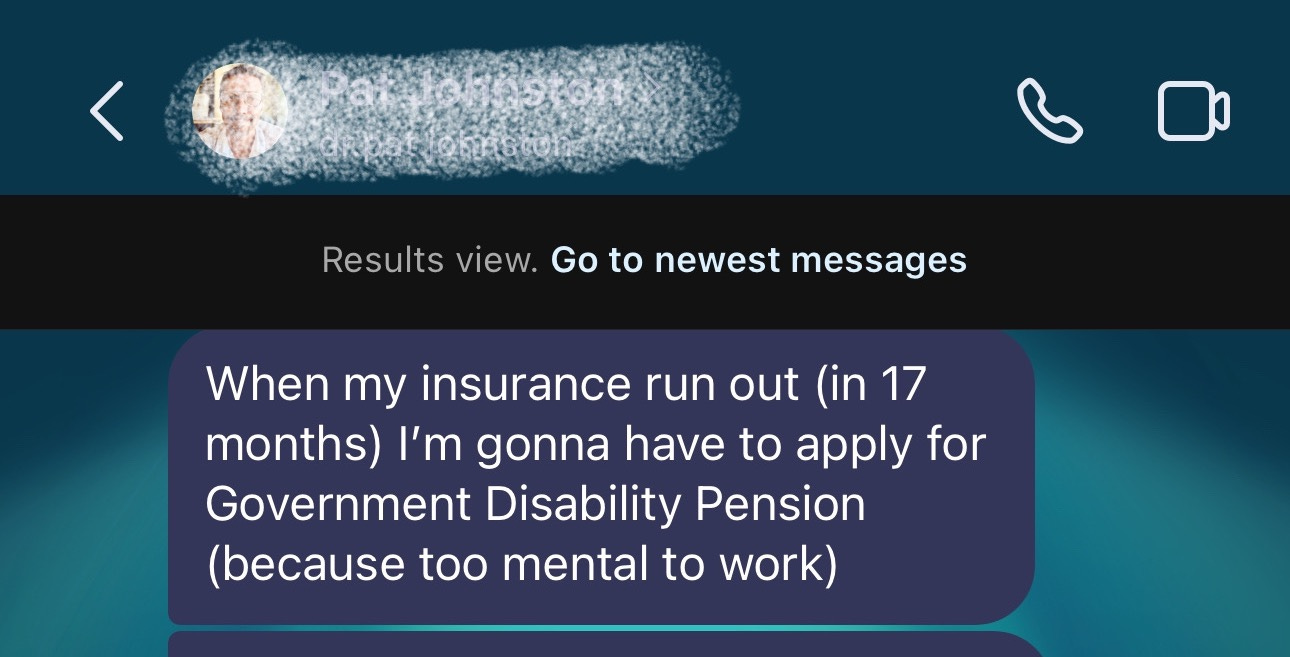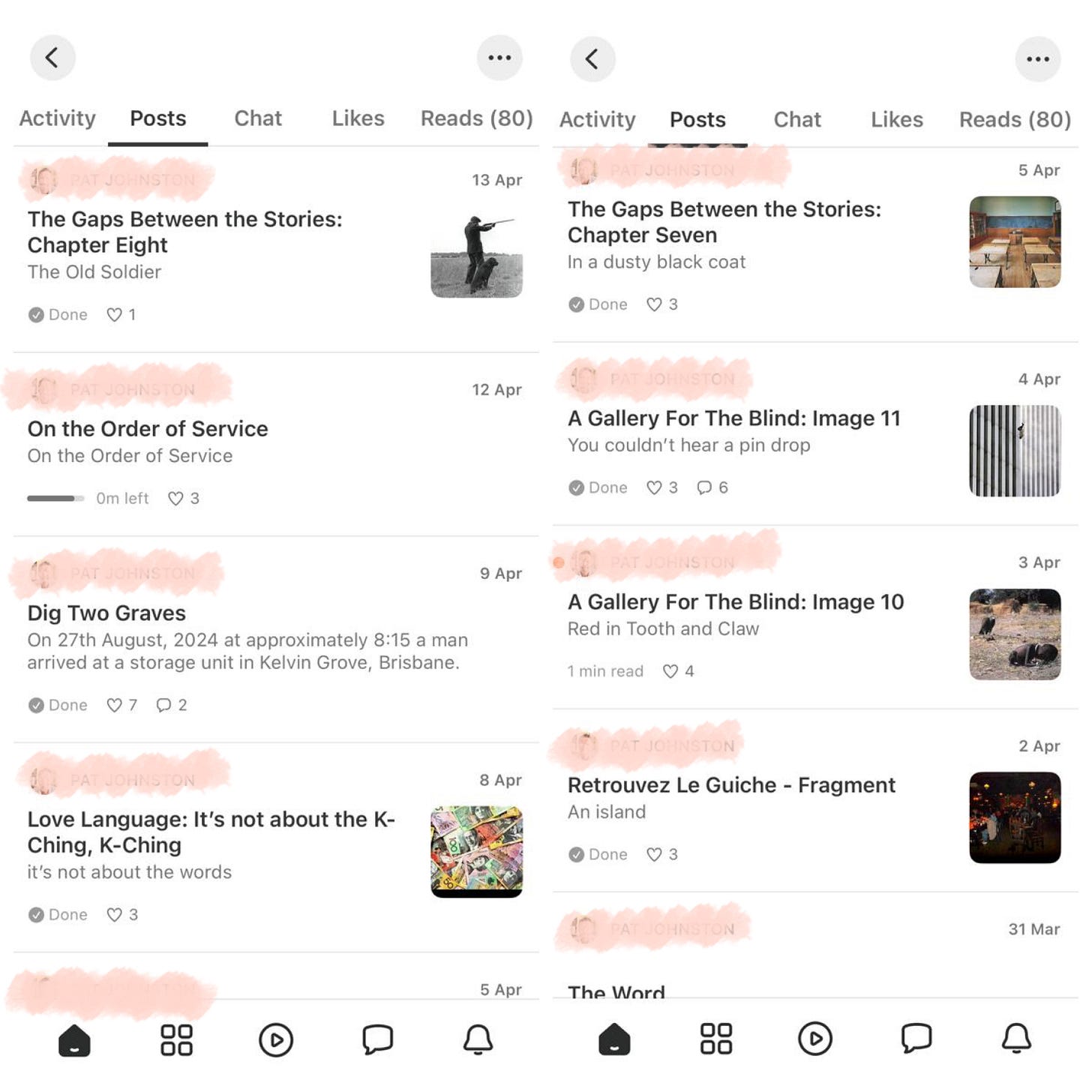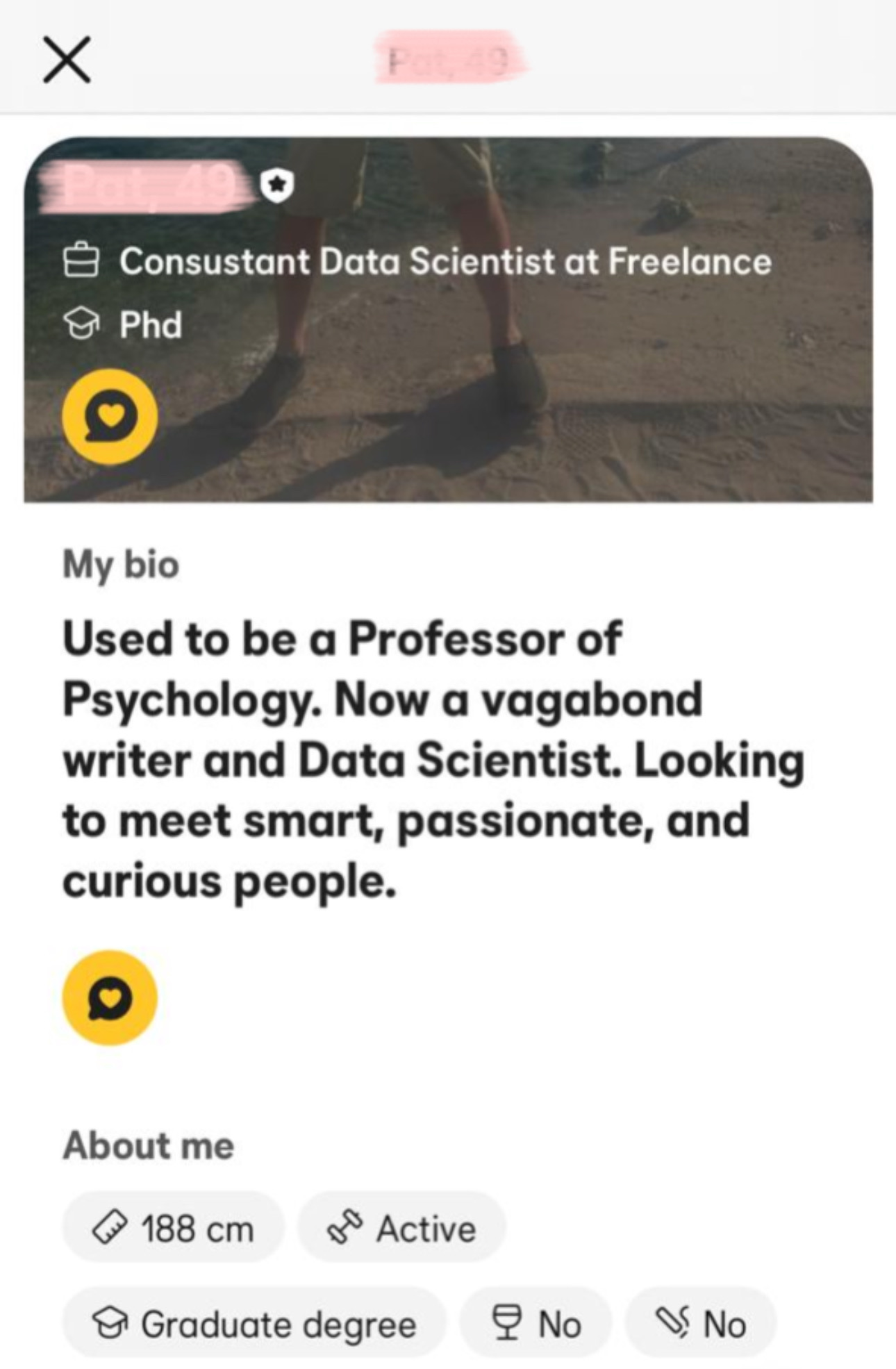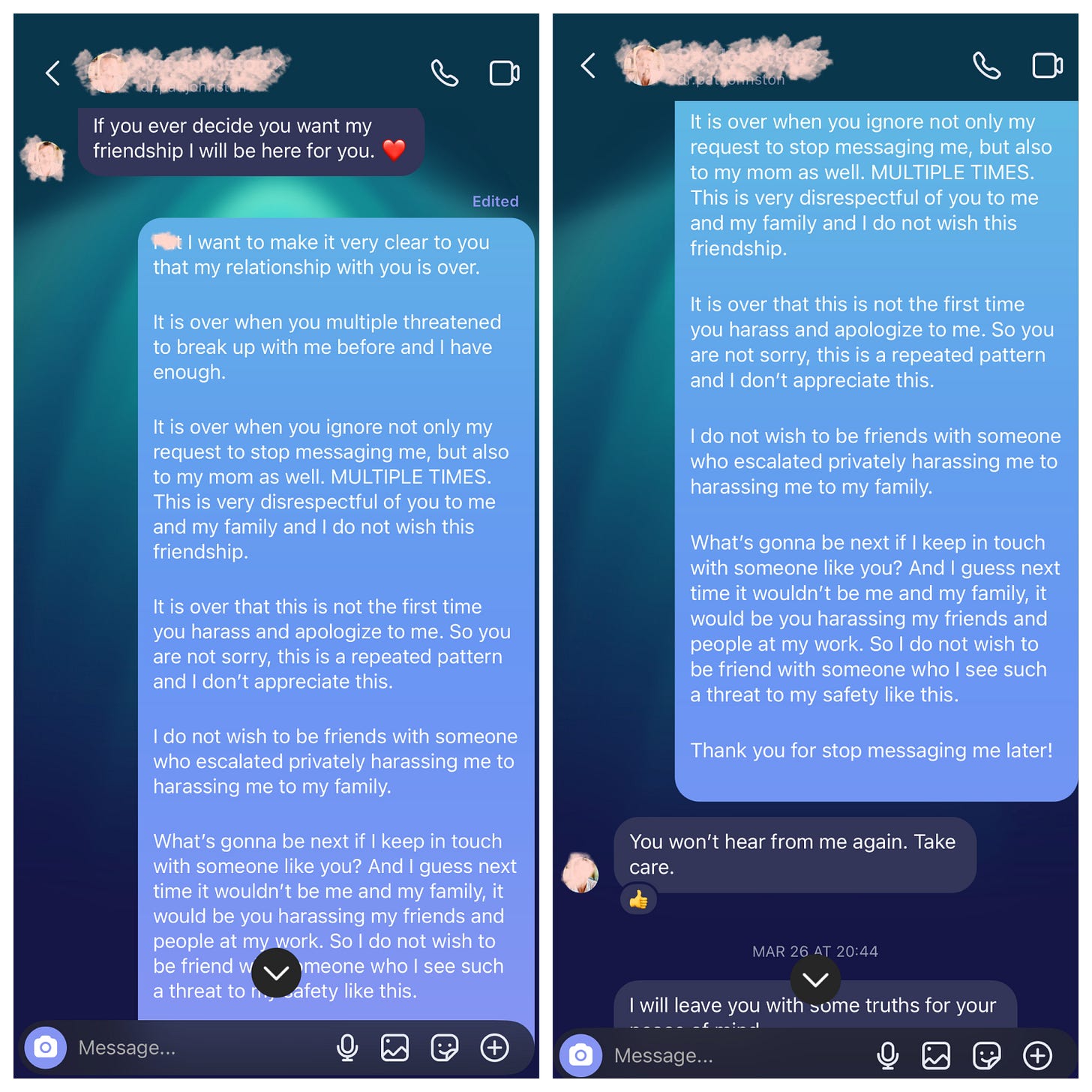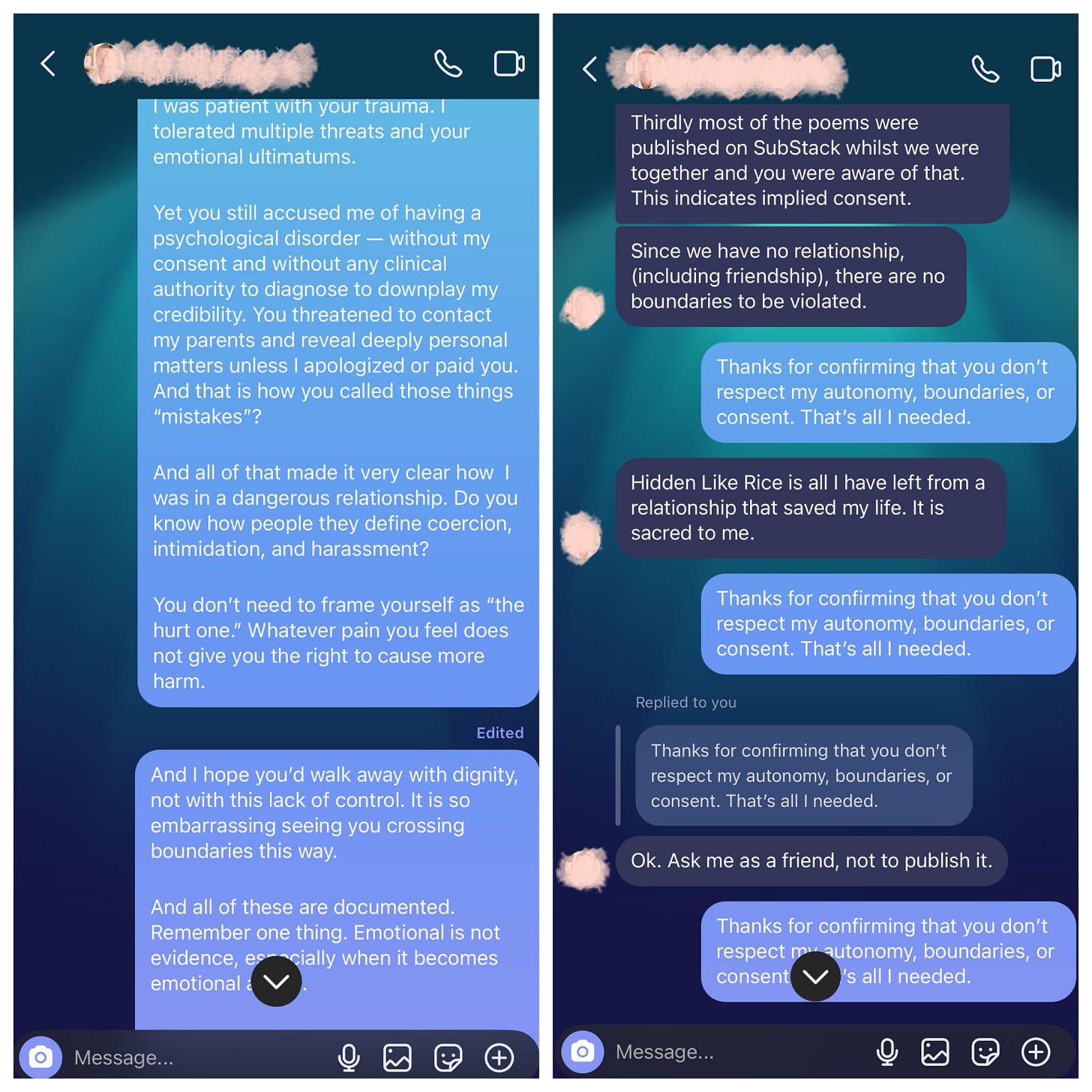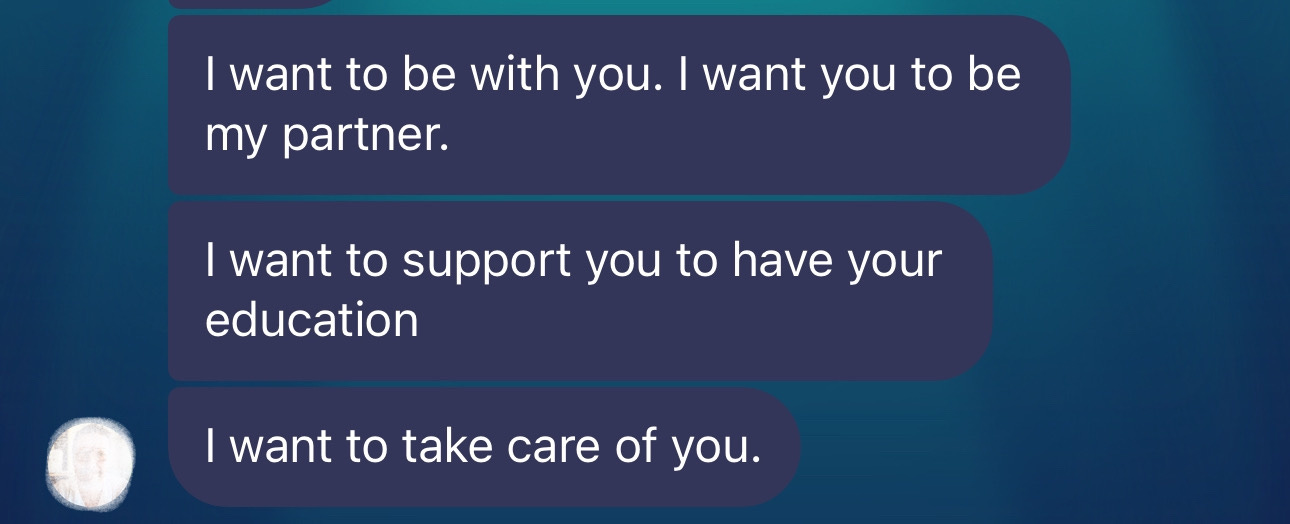Mr. J, a Former Professor Series – Entry 6: The Ethics of a Tinder Bio
Figure out what a Tinder bio says about a cross-sector case study
Context:
The subject previously held a public-facing academic title and has since presented himself through multiple platforms, including dating profiles.
The bio excerpt analyzed here is drawn from a current dating app listing.
Methodological Frame:
This entry engages with narrative reframing, symbolic rehabilitation, and the strategic repurposing of victimhood in digital spaces.
It analyzes how emotionally loaded language — especially within platforms like Tinder — can be used to rewrite public memory, seek moral reentry, or perform curated vulnerability.
The reading foregrounds power asymmetry, narrative coercion, and the aesthetics of post-accountability self-fashioning.
Disclaimer:
Toowong Private Hospital is referenced solely as a narrative location mentioned in the subject’s publicly available writing. No clinical evaluation is intended or implied.
Queensland University of Technology (QUT) is referenced solely to indicate the subject’s previously stated affiliation. QUT has publicly confirmed that the subject no longer holds any current academic position. No claim is made regarding the institution’s knowledge, involvement, or responsibility in the subject’s current conduct.
The Defence Science and Technology Group (DSTG) is mentioned based on its appearance in the subject’s publicly listed professional history. No assertion is made regarding DSTG’s awareness of, or connection to, any personal, literary, or online activity by the subject.
All institutional mentions serve to examine rhetorical choices and symbolic positioning made by the subject in public domains.
Image partially obscured for privacy. Included solely for narrative ethics commentary and critical reflection. No public identification or legal conclusion is made.
This entry offers a critical reflection on patterns involving welfare ethics, symbolic coercion, and institutional boundaries. It is not intended to target or malign any individual. Professional or legal clarification is welcome via appropriate channels.
Update: This entry has been sent to the National Social Security Rights Network (NSSRN), the Australian Council of Social Service (ACOSS), and the Commonwealth Ombudsman for professional review and consideration regarding narrative ethics, symbolic misuse of public-facing identities, and welfare policy integrity.
Institutional response pending.
(No assumptions are made about outcome or endorsement.)
Table of Contents
Institutional Reference and Psychiatric Symbolism
Examining the rhetorical use of mental health facilities in public-facing narratives.Asymmetrical Relationships and Retrospective Grooming
Analyzing age, authority, and emotional leverage in relational framing.Welfare Positioning and the Ethics of Support Seeking
Intersections between disability claims, public sympathy, and digital self-representation.
Screenshot captured on April 21, 2025
I. INSTITUTIONAL REFERENCE AND PSYCHIATRIC SYMBOLISM
1. Repeated Institutional Reference Across Platforms
The name Toowong Private Hospital appears repeatedly across the subject’s public and private communications — as both a geographic marker and a symbolic anchor. It is invoked not to clarify clinical history, but to frame a story: one of wounded genius, spiritual return, and moral exception.
In one Substack post, the hospital becomes an abstract site of recovery — “back where you found me” — gesturing toward redemption rather than responsibility. In a Tinder message, the same name reappears in verse, framed as a poetic lament. And in private messages, it resurfaces yet again, reinforcing a recurring motif of fragility and sacrifice.
From Instagram
Received: 12 April 2025, day 37 of documented harassment
Screenshot captured on Substack on April 13, 2025
This recurring reference to a psychiatric institution — across at least three distinct channels (Substack, Instagram, Tinder) — is not neutral. It constitutes a symbolic strategy: to shield the subject from accountability by invoking mental illness as a sanctified border. Through repetition, the hospital name becomes more than a place. It becomes alibi.
2. From Disclosure to Symbolic Shielding
Such symbolic triangulation — between institution, identity, and affect — raises ethical questions. At what point does personal storytelling become symbolic overreach? When does referencing a hospital cross from introspection to persuasion?
By embedding institutional names within emotionally persuasive writing, the subject blurs the line between disclosure and self-narrative defense. This pattern, when combined with repeated unwanted contact, suggests not just expression — but emotional leverage.
II. ASYMMETRICAL RELATIONSHIPS AND RETROSPECTIVE GROOMING
He called himself ‘daddy’ — but when financial responsibility was invoked, especially around education,
the figure behind the word collapsed faster than the ethics he once preached.
The care wasn’t real. Only the control was.
Screenshot captured on April 14, 2025
The respondent’s dating profile features a blend of institutional references and emotionally manipulative language. It names Toowong Hospital — a known mental health facility — alongside poetic coercion (“Please close the door. Or speak”) and infantilised roleplay (“Daddy, looking for his little monster”).
This combination suggests symbolic grooming: invoking trauma, institutional symbolism, and power-coded intimacy to create emotional leverage.
His continued use of former academic titles and affiliations (e.g., QUT) while seeking “young, emotionally mature women” reinforces a pattern of prestige-based grooming. The pairing of academic authority with targeted romantic framing reflects a recurring strategy — one that blends symbolic dominance with emotional suggestion.
Given prior concerns around coercion, image manipulation, and power imbalance, these elements raise red flags about behavioural continuity across platforms.
These indicators contradict claims of sustained psychological or social dysfunction, and may raise concerns regarding the integrity of any associated DSP or disability-based representations.
The respondent once promised to cover my tuition fees in Australia — a gesture I accepted in good faith. Later, when I asserted personal boundaries, he revoked the offer as a form of emotional retaliation. This reversal was not merely a personal shift; it reflected a broader pattern of psychological grooming through financial inducement and conditional affection.
While legally of age, the dynamic was shaped by a clear power imbalance, emotional inducement, and punitive withdrawal. The tuition promise — romanticized at first, then weaponized — operated less as genuine support and more as strategic leverage.
Received: 1 May 2025 - Day 56 of documented harassment
III. WELFARE POSITIONING AND THE ETHICS OF SUPPORT SEEKING
In January 2025, the respondent stated his intention to apply for the Disability Support Pension (DSP) in Australia, citing psychological incapacity and describing himself as “too mental to work.” The expected benefit was approximately $800 AUD per fortnight.
When someone declares they’re “too mental to work,” but stays mentally sharp enough to write weekly essays, match on Tinder, and send emotionally baiting poems.
Received: 5 Jan 2025
The claim would be unremarkable — if not for the extent of his documented public activity during the same period.
Sustained High-Output Publishing
Despite his stated incapacity:
The respondent published between 5–10 Substack entries per week, including long-form narrative essays, serialized poetry, and rhetorical commentary.
Screenshot captured on Substack on April 14, 2025
Update:
Despite the public critique of these contradictions in Entry 6, the respondent has continued to publish at the same pace — with no change to their public profile or platform usage. The sustained creative output, even after formal documentation of inconsistencies, reinforces questions of credibility rather than alleviates them.
Screenshot captured on Substack on May 17, 2025
In a strange form of poetic defiance, the subject has continued to post with the same symbolic cadence — not as someone too unwell to work, but as someone too proud to stop.
These entries demonstrate sustained planning, formatting, and topic coordination — inconsistent with conditions typically qualifying for DSP on psychological grounds.
Concurrent Self-Branding as a Worker
Across digital platforms (e.g., Tinder, Bumble), the respondent continues to:
Present himself as a writer, data scientist, and freelance professional.
Maintain a narrative of occupational identity, undermining the claim of functional incapacity required by DSP eligibility criteria.
Social and Psychological Energy Investment
Over the same period:
The respondent sent unsolicited digital communications to me, continuing for weeks despite formal no-contact boundaries.
Received: March 21 2025 - Day 15 of documented harassment
Received: 22-23 April 2025 – Day 47-48 of documented harassment
Received: 23-24 April 2025 – Day 48-49 of documented harassment
Received: 20 March - 30 April 2025 – Day 14 and 55 of documented harassment
These included emotionally complex language, repetition, and thematic escalation — requiring planning, affect regulation, and intentional audience engagement.
Such behavior is not reflective of psychological withdrawal or dysfunction.
It suggests strategic communication, not impaired capacity.
Professional Misrepresentation Risk
The respondent’s LinkedIn profile continues to list Queensland University of Technology and the Defence Science and Technology Group (DSTG) as active affiliations on his LinkedIn profile — despite no longer holding any active position.
Screenshot captured on May 14, 2025, showing the subject’s LinkedIn profile still listing “Adjunct Professor” at Queensland University of Technology (QUT) and an affiliation with the Defence Science and Technology Group (DSTG) — despite QUT having confirmed that the subject no longer holds any current academic position at the university. There is no public confirmation from DSTG regarding the subject’s present status.
Image included for documentation and contextual accuracy. Identity details have been partially obscured.
This dual listing — one academic, one defence-related — presents a clear misalignment between public-facing representation and any declarations made to Centrelink or DSP assessors regarding work capacity.
When individuals publicly align themselves with high-trust institutions while simultaneously declaring functional incapacity, the resulting tension is not merely administrative — it is symbolic.
In such cases, symbolic affiliations may operate as narrative shields — bolstering perceived legitimacy while obscuring factual or ethical clarity.
When someone continues to display prestigious affiliations while applying for welfare support, the issue exceeds procedural inconsistency; it reflects a deeper contradiction between self-presentation and lived capacity.
Conclusion: Behavior vs. Eligibility
It could be argued that maintaining former professional affiliations on a public profile — or referencing a mental health facility in personal writing — does not, in itself, constitute deception or ethical breach. Individuals experiencing psychological distress may still demonstrate moments of lucidity, productivity, or creativity, and symbolic storytelling is a recognized form of identity repair.
However, when such storytelling is accompanied by persistent boundary violations, emotionally loaded outreach, and rhetorically curated self-presentation, the distinction between personal processing and strategic deflection becomes increasingly blurred. In this case, the frequency, tone, and recurrence of these behaviors suggest not therapeutic expression, but reputational choreography.
This entry makes no claim to medical authority.
However, the consistency, intentionality, and volume of the respondent’s public-facing conduct — combined with his ongoing platform engagement and symbolic affiliations — raise legitimate concerns about the credibility of his stated incapacity.
The Disability Support Pension (DSP) is a safety net, not a symbolic shield.
Using it as such — while engaging in persistent self-publication, unsolicited contact, and narrative manipulation — risks undermining the public trust upon which such support systems rely.
When the Educator Fails His Own Lessons
– A doctor who prescribes the wrong medication for profit betrays the Hippocratic oath.
– A journalist who publishes false information betrays their commitment to truth.
– And a former professor who promises to pay tuition but withdraws that promise
betrays the very role of guidance, support, and intellectual stewardship that education is meant to embody.
Received: December 31, 2024
Read the full series
- Entry 1: The Man Who Taught Me Ethics by Failing All of Them
- Entry 2: The Disappearance of the Public Poet
- Entry 3: The Hanging Tree Case Study
- Entry 4: Hidden Like Accountability
- Entry 5: The Collapse of Assumptions
- Entry 6: The Ethics of a Tinder Bio - Figure out what a Tinder bio says about a cross-sector case study (you are here)
- Entry 7: How He Ate Told Me Everything
- Entry 8: What Makes a Scholar Dangerous
- Entry 9: Fragment of Life, Fragment of Accountability
- Entry 10: Anatomy of Disappointment
- Entry 11: Legal Defense Challenges: A Framing Statement
- Entry 12: Six Years After Ronell – What Academia Still Doesn’t Get
- Entry 13: QUT and The Man Who Raped Me
- Entry 14: Why Sarcasm Toward Institutions Can Backfire
- Entry 15: P*ssy or Toxic Masculinity?
- Entry 16: Who is Your Favorite Comedian?
- Entry 17: And What is Your Favorite Song?
- Entry 18: Grant Proposal — Narrative Ethics as Survivor-Led Forensics
- Entry 19: The Coward Behind the Clone
- Entry 20: [URGENT HIRE] CRISIS COMMUNICATIONS SPECIALIST
- Entry 21: [URGENT] Legal Counsel Needed for Complex Reputation Rehabilitation
- Entry 22: YOU’RE AN ABUSER. STOP CONTACTING ME
- Entry 23: Seeking Counsel for a Fallen Academic
- Entry 24: Internal Legal-PR Briefing
- Entry 25: For Journalists – Legal & Ethical Clearance Summary
- Entry 26: Symbolic Prostitution, Transactional Intimacy, or Just a “Loan”?
- Entry 28: Why He Simply Cannot Shut Up
- Entry 29: Forensic Commentary on “LARGE Language Muddle”
- Entry 30: Don’t Just Threaten My Future. Because I’m Going To Archive Your Present
- Entry 31: Open Letter to the Person Who Tried to Break Me with Defamation
- Entry 32: Defamation, Harassment, Doxxing Class 101
- Entry 33: Confidential Crisis Recovery Proposal
- Entry 34: Forensic Behavioral-Somatic Report
- Entry 35: Forensic Commentary on the Tattoos
- Entry 36: QUT and the Abuser They Once Had
- Entry 38: When Poetry Becomes Revenge Porn
- Entry 40: A Man Built for Applause, Not Accountability
- Entry 41: Neurobehavioral Addendum
- Entry 43: Why Does It Sound Like a War Metaphor?
- Entry 44: Forensic Commentary on Racialized and Fetishizing Language in “Hidden Like Rice”
- Entry 45: Public Misuse of Former Academic Affiliation
- Entry 46: The Two Things That Didn’t Leave a Bad Impression
- Entry 47: When Affection is Just an Alibi (A Bundy-Inspired Reflection)
- Entry 48: Humbert, Lolita, and the Fetish of Fragility
- Entry 49: The Fetish of Smallness as Symbolic Violence
- Entry 50: Motif Risk Analysis
- Entry 52: Can an Abuser Be a Good Father?
- Entry 53: Who Protects the Children?
- Entry 54: From Blackmail to Children
- Reflection: The Miscalculation
(More entries coming soon)
→ [Back to Start: Introducing Mr. J, a Former Professor Series]
© 2025 Linh Ng. All rights reserved.
This publication is intended for educational and reflective purposes only.
Sharing the original link is welcomed and encouraged.
Please do not reproduce, redistribute, or translate this content — in whole or in part — without written permission.
This piece reflects both lived experience and critical analysis. It is not meant to be detached from its author or reframed without context.
Misuse or decontextualization may lead to formal clarification or takedown requests.
This work has been reviewed and quietly followed by scholars, educators, and ethics professionals across multiple sectors.
If your institution is engaging in critical discourse around narrative justice, symbolic coercion, or representational ethics, feel free to connect via Substack DMs or formal channels.
A regulatory case regarding this matter has already been classified under a protected status within national education integrity systems.
Should any reputational countermeasures or distortions arise, I reserve the right to publish the documented timeline, behavioral patterns, and contextual metadata.
All relevant documentation has been submitted through formal legal and regulatory pathways.
Photo by Good Faces Agency on Unsplash





